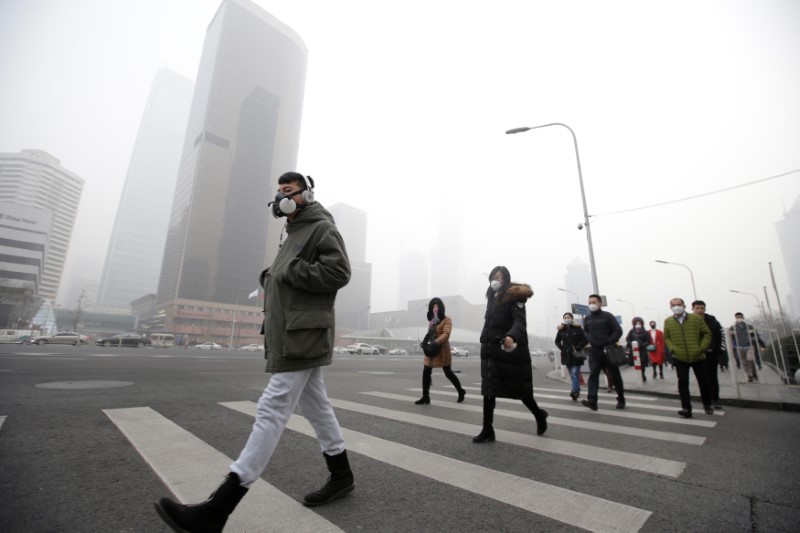
BEIJING (Reuters) – Heavy smog in northern China on Sunday caused hundreds of flights to be canceled and highways to shut, disrupting the first day of the new year holiday.
Large parts of the north were hit by hazardous smog in mid-December, leading authorities to order hundreds of factories to close and to restrict motorists to cut emissions.
The latest bout of air pollution began on Friday and is expected to persist until Thursday, although it will ease slightly on Monday, the last day of the new year holiday.
In Beijing, 24 flights were canceled at the city’s main airport and all buses from there to neighboring cities suspended, the airport said in a statement on its official microblog.
Average concentrations of small breathable particles known as PM2.5 were higher than 500 micrograms per cubic meter in Beijing – 50 times higher than World Health Organization recommendations.
In Tianjin, Beijing’s next door metropolis, the smog was not as serious but visibility much worse, with more than 200 flights canceled at Tianjin airport and conditions not expected to improve in the near term, the city government said.
Some bus routes and highways in Tianjin were also closed due to the smog, the government added.
In Shijiazhuang, the provincial capital of Hebei province that surrounds most of the Beijing, about two dozen flights were canceled and eight flights diverted to other airports because of the smog, the People’s Daily said on its website.
A total of 24 Chinese cities have issued red alerts for the current round of pollution, which mandate measures like limiting car usage and closing factories, while 21 have issued orange alerts, including Beijing and Tianjin.
China began a “war on pollution” in 2014 amid concerns its heavy industrial past was tarnishing its global reputation and holding back its future development, but it has struggled to effectively tackle the problem.
Pollution alerts are common in northern China, especially during winter when energy demand, much of it met by coal, soars.
The country’s northern provinces mostly rely on the burning of hundreds of millions of tonnes of coal each year for heating during northern China’s bitterly cold winters.
(Reporting by Ben Blanchard; Editing by Richard Pullin)
Copyright 2016 Thomson Reuters. Click for Restrictions.


